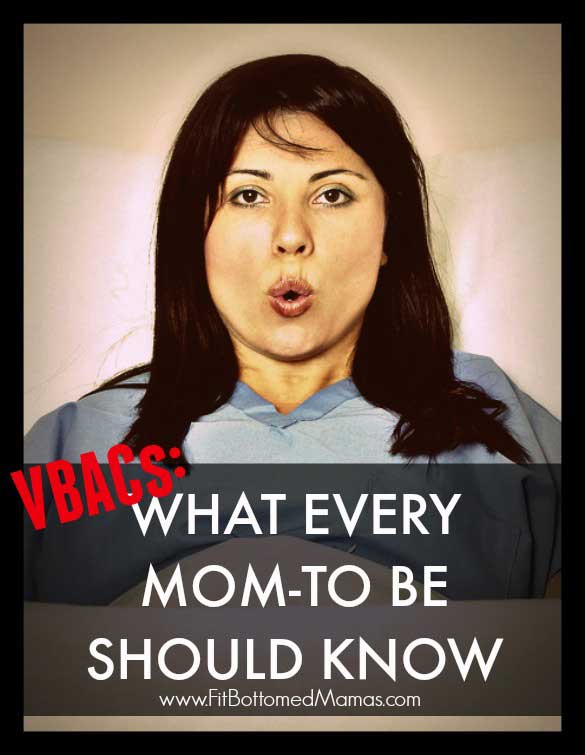VBACs: What Mamas-to-Be Should Know
 Some pregnant women know from the get-go that they just want a C-section. I was not one of these women. I hate surgery rooms and have a fear of needles, so a C-section was the last way I planned to give birth. When I found out I would need a C-section after months of planning for my natural birth, I was crushed, mostly because I thought it doomed me to C-sections for the rest of my life. A friend told me about VBACs and the possibility of having normal delivery post-Cesarean. I went into my birth much more at peace with the C-section, knowing that this possibility existed.
Some pregnant women know from the get-go that they just want a C-section. I was not one of these women. I hate surgery rooms and have a fear of needles, so a C-section was the last way I planned to give birth. When I found out I would need a C-section after months of planning for my natural birth, I was crushed, mostly because I thought it doomed me to C-sections for the rest of my life. A friend told me about VBACs and the possibility of having normal delivery post-Cesarean. I went into my birth much more at peace with the C-section, knowing that this possibility existed.
Since my first C-section four years ago, I’ve had a second repeat Cesarean due to breech presentation. Now that I’m expecting baby No. 3, I’m really hoping to have a non-surgical birth this time around. When I mention this to people, I usually get one of two responses. The first is approval and encouragement. The second goes something like this: “You can DO that? After two C-sections? Is it safe?!” I always answer in the affirmative, but I know that unfortunately there are a lot of myths out there about giving birth after a C-section. Here are the top myths I’ve heard regarding VBACs, or vaginal birth after cesarean.
What Moms Should Know About VBACs
Myth #1: Once a C-section, always a C-section. I’m amazed at the number of people I meet who have no idea you can give birth naturally after a C-section. It shouldn’t surprise me, though, because four years ago I was one of them. According to the American Pregnancy Association, 90 percent of women who have had a previous C-section are candidates for a trial of labor, and approximately 60 to 80 percent of attempted VBACs are successful.
Myth #2: VBACs are dangerous and life-threatening. According to the American College of Obstetrics and Gynecologists (ACOG), an elective repeat Cesarean is a higher risk procedure than a successful VBAC. The primary concern associated with VBAC is increased risk of uterine rupture. Long story short, if you have a scar on your uterus you are at higher risk for this complication, which can be a serious one. The risk of uterine rupture for a trial of labor is .5 to .9 percent. For this reason, many women feel more comfortable having their VBAC in a hospital setting where an emergency C-section can be performed quickly.
Myth #3: You can only have a VBAC if you’ve had one previous C-section. I was worried after my first two C-sections that I wouldn’t be able to find anyone to attempt a VBAC (or technically, VBA2C). I was pleasantly surprised to read the updated guidelines for VBAC candidates from the ACOG: “The College guidelines now clearly say that women with two previous low-transverse Cesarean incisions, women carrying twins and women with an unknown type of uterine scar are considered appropriate candidates for a TOLAC.” Some doctors might even attempt a TOLAC (trial of labor after cesarean) for moms who have had more than 2 C-sections. I know a woman who just had a successful VBAC after three previous C-sections.
Myth #4: You’re a lousy mom and woman if your VBAC doesn’t work out. Okay, maybe I’ve never heard anyone say this, but I definitely felt some disappointment after my VBAC didn’t work out last time. However, even though I didn’t have a successful VBAC, my birth was an amazing experience and I felt that I played a much more active role than I had the first time. Educating yourself about the benefits of VBAC and taking an active part in making it happen (to the extent that you can) will go a long way in improving your birth experience, whether it is successful or not.
If you are interested in learning more about VBACs, see if there’s an ICAN (International Cesarean Awareness Network) in your area. This is an awesome group that provides support for women who want to learn more about VBACs and maybe even give it a shot. They also provide lists of VBAC providers in your area. If there isn’t a chapter, you can join their forums and Facebook group to connect with other moms.
Would you try for a VBAC yourself? Been successful? Share your story! —Nicole
